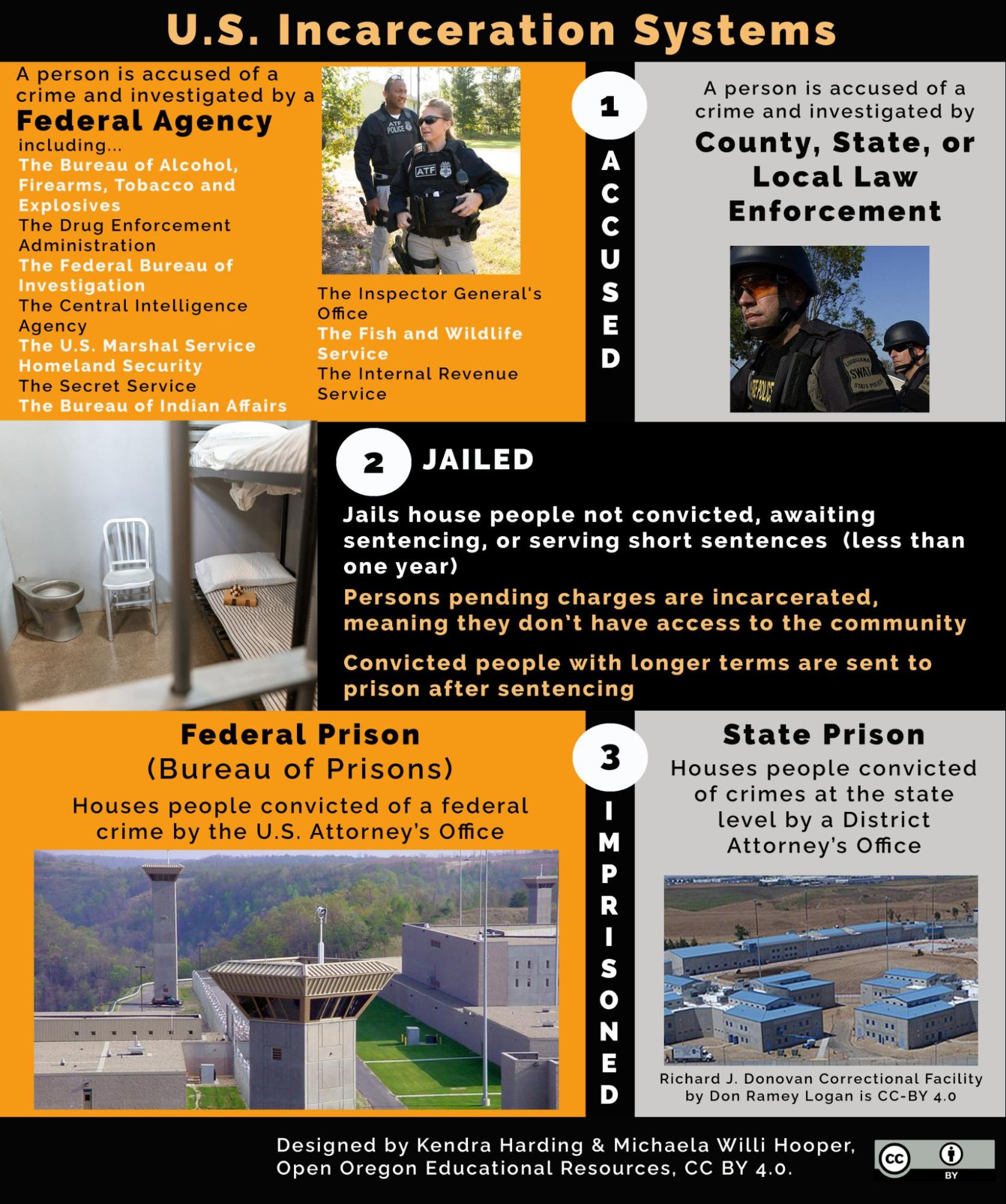7.1 Chapter Overview and Learning Objectives
U.S. jails and prisons hold in custody a disproportionate number of people with mental disorders. According to the National Alliance on Mental Illness (NAMI), “About two in five people currently incarcerated have a history of mental illness — a rate twice as high as the average in this country.” This statistic is alarming because it speaks to the fact that rates of mental disorders are significantly higher in custody than in the community. Although the United States has moved away from psychiatric institutions, we struggle as a country to develop sustainable community support to keep people with mental disorders out of the prison system. Without on-going improvements to support these individuals in the community, we as a society continue to perpetuate a system that incarcerates people who are diagnosed with mental disorders and developmental disabilities. If we provide wrap-around integrated health services, supportive employment, and sustainable housing, we give people the opportunity to thrive in the community.
Beginning in 1959, many people with mental disorders who were previously housed in psychiatric hospitals began to be released into the community (National Institute of Corrections). Reasons for this shift, commonly referred to as deinstitutionalization and discussed in Chapter 1 of this text, included advancements in psychiatric medications and access to social security funds. Deinstitutionalization provided people with mental disorders more freedom, but in some cases the community was not set up to support them. This led to an increase in houselessness for some people with mental disorders, which ultimately contributed to increased incarceration of this group for petty crimes such as theft, disorderly conduct, and trespassing. Many efforts have been made to provide more access to treatment and divert crimes that are more indicative of mental health versus criminality. However, the criminalization of mental disorders continues to be a major issue in our criminal justice system. Criminalization is a focus of Chapter 4 of this text and is discussed in depth there.
Given that a large number of people with mental disorders are, for complex reasons, being treated in jails and prisons, it is important to understand and improve the programs and opportunities available for support and treatment within these facilities. This chapter will discuss current programming established in jails and prisons to support incarcerated people diagnosed with mental disorders.

Figure 7.1 Describes the U.S. incarceration system from time of arrest and incarceration to placement at Bureau of Prisons and state correctional facilities.
7.1.1 Learning Objectives
Upon completion of this chapter, you will be able to:
- Describe the purpose of jail and its multiple systems, including evaluations and screenings, housing, victimization, population management, and suicide prevention.
- Describe the purpose of prison programs and analyze prison curriculums.
- Explain the role of therapeutic communities within in-custody programs.
7.1.2 Licenses and Attributions for Chapter Overview
NAMI: Mental Health Treatment While Incarcerated | NAMI: National Alliance on Mental Illness
Indicators of Mental Health Problems Reported by Prisoners and Jail Inmates, 2011-12 (ojp.gov)
Some information summarized and one paragraph copied verbatim from People with Mental Health Conditions in Corrections | National Institute of Corrections (nicic.gov)
